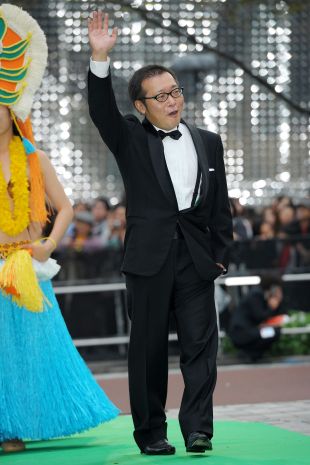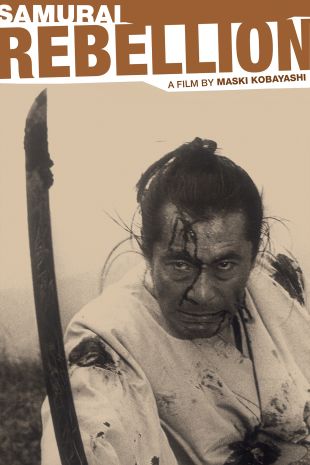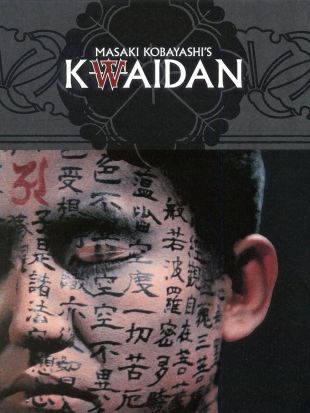Masaki Kobayashi is considered one of the great cinematic masters of the Japanese immediate post-war era, a generation overshadowed by the towering presence of Akira Kurosawa. No one of that generation of filmmakers was affected quite as strongly by the war as Kobayashi. His most acclaimed films are unflinching explorations into the dark side of Japanese culture, the side that drove men to commit gory suicide for the name of honor and commit horrific atrocities in the name of the Emperor. Kobayashi's exacting professionalism makes his films a visually and emotionally power experience.
Born in February, 1916, in Japan's northern-most island Hokkaido, Kobayashi entered prestigious Waseda University in 1933, where he studied Asian art history. Though he excelled at his studies and was mentored under renowned scholar Yaichi Aizu, Kobayashi eventually left Waseda to enter Shochiku's Ofuna studios. As the threat of war with the West grew ever present, he felt that the future was too uncertain to devote to academics; he wanted to leave something behind. Kobayashi worked as an assistant for a mere eight months before he was drafted and sent to the front in Manchuria. Opposed to the war, which he viewed as senseless, he refused to rise above the position of private. In 1944, he was transferred to the southern Ryukyu Islands, where he witnessed the war's final bloody tumult. There he was captured by the U.S. and held for a year in a detention camp in Okinawa. In the fall of 1946, Kobayashi returned to Shochiku and served for six years as an assistant director under Keisuke Kinoshita.
Kinoshita's signature fascination with purity and innocence is clearly visible in Kobayashi's early works; he even wrote the script for his second feature Magokoro (1953). Kobayashi first began to develop his own voice with his 1953 Thick-Walled Room. Based on the diaries of low-ranking war criminals, the film was shockingly outspoken for its time and was ultimately shelved for three years by studio head Shiro Kido. When it finally was released in 1956, it won a Peace Culture Prize. Kobayashi switched back and forth between the Kinoshita style of domestic dramas and the darker socially minded works until he garnered international acclaim and a prestigious San Giorgio prize at the Venice Film Festival in 1960 for his Human Condition I: No Greater Love (1958), the first installment of sweeping trilogy about the war. Based on Jumpei Gomikawa's six-volume novel, the tale focuses on avowed pacifist Kaji, who is drafted into the army and forced to inflict cruelty on Chinese prisoners and his underlings, forced to lead his men into certain death and eventually captured as a war criminal by the Soviets. Though the film showcases Kobayashi's existential humanistic philosophy, first seen in Thick-Walled Room, it is a much darker and more pessimistic philosophy than that espoused by Akira Kurosawa. Instead of possibilities of enlightenment as seen in Kurosawa's Ikiru (1952) or justice as in The Bad Sleep Well (1960), the most one can hope for in Kobayashi's world is dignity while evil inevitably springs from dogma and pitilessness. Human Condition I is also significant because it launched the career of Tatsuya Nakadai. Just as many of Kurosawa's films were defined by the macho-presence of Toshio Mifune, so were Kobayashi's films brought to life by the masterful performances of Nakadai in such Kobayashi classics as Harakiri (1962), Kwaidan (1964), and Rebellion (1967). In the '60s, Kobayashi's visual style grew increasing spare and minimalistic. In his masterful Harakiri, he deftly juxtaposed the stark black of the aristocracy's kimonos with the brilliant white of the courtyard's sand, lending the film's tonal scheme a symbolic quality. With the acclaimed Kwaidan, his first color film, he pushed this emphasis on composition with his expressionistic use of color. Like many of his generation, including Kinoshita and Kurosawa, Kobayashi produced less and less films during the 1970s when the studio system collapsed and soft-core pornography became a mainstream genre. Kobayashi died in of a heart attack in 1996.



